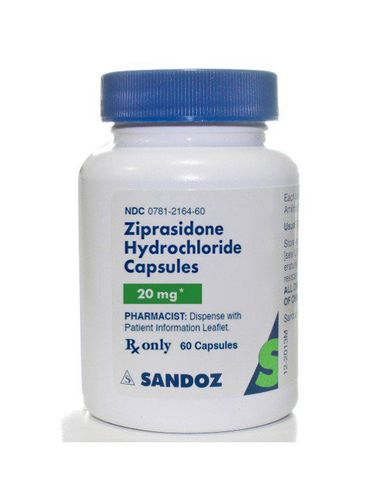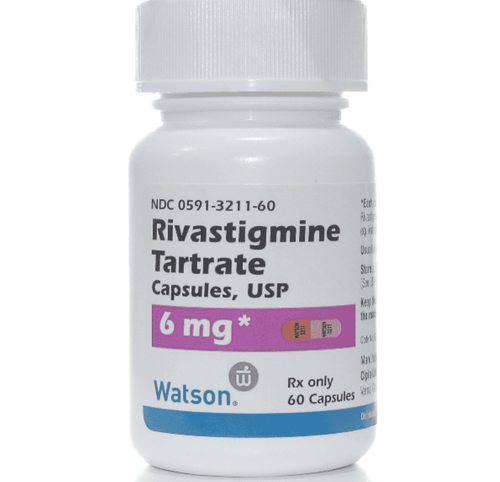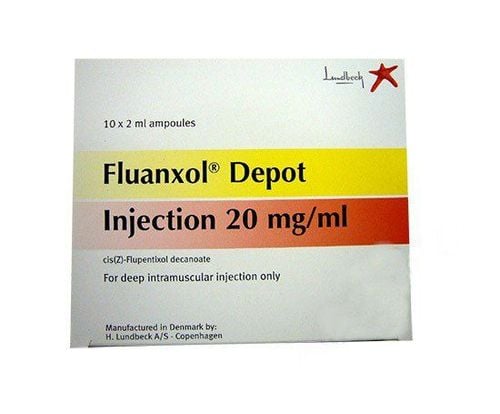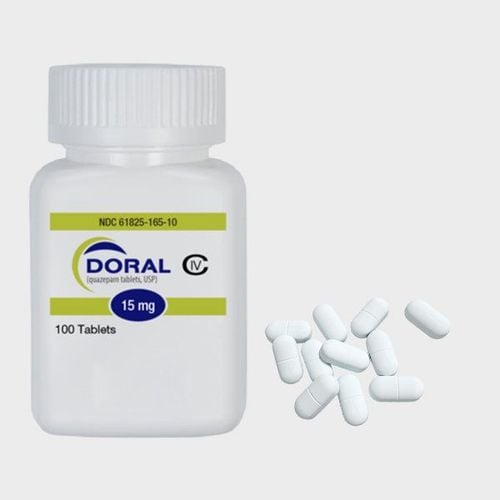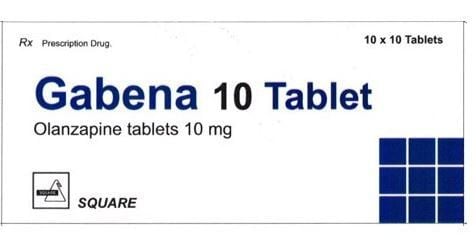This is an automatically translated article.
Tardive dyskinesia or TD is a type of neurological syndrome that occurs when patients have random and involuntary muscle movements, usually of the face, tongue, lips, or jaw. The following article will specifically explain the issues surrounding drug-induced tardive dyskinesia.
1. What is tardive dyskinesia?
Tardive dyskinesia is a neurological syndrome that causes random, involuntary jerky movements that occur in the lower face areas such as the jaw, lips, and tongue. Tardive dyskinesia also causes involuntary movements of many other organs. In some cases, patients may also experience seizures in the arms, fingers, legs, and toes. If the disease is severe, the patient can move anywhere in the whole body.
Some specific types of tardive dyskinesia include:
Puckering, grimacing, or pursed lips. Chew over and over again. Blink continuously. Unintentionally waving arms and legs. Random twitching fingers... Tardive dyskinesia not only has negative consequences on patients' daily life and activities, but also leads to negative emotionalization of them. Most people with tardive dyskinesia tend to:
Confused and embarrassed by their unconscious behaviors. Frustrated, feeling helpless because of not being able to control yourself. Always in a state of anxiety because you do not know when these actions appear.
2. What causes tardive dyskinesia?
The main cause of Tardive Dyskinesia is a side effect of mood disorders drugs, also known as sedatives. These are drugs with the main function in the treatment and improvement of mental disorders such as: bipolar disorder, schizophrenia ... and some other common mental illnesses.
These drugs work by inhibiting and blocking dopamine receptors in the brain. Meanwhile, dopamine is a neurotransmitter with an important role in motor activity. When dopamine levels drop below a safe level, movements will begin to become undirected by the brain, leading to unconscious behavior or, ultimately, tardive dyskinesia.
Currently, antipsychotic drugs include 2 types, typical drugs and atypical drugs. In particular, typical antipsychotic drugs bring a higher risk of tardive dyskinesia. The side effects of this mood disorder drug usually appear after about 3 months of continuous use and not all patients taking the drug lead to this syndrome.

Nguyên nhân chủ yếu gây loạn vận động muộn là do tác dụng phụ của thuốc rối loạn cảm xúc
3. What drug causes tardive dyskinesia?
As discussed in the previous section, Tardive Dyskinesia occurs primarily as a side effect of affective medications. Below are some specific classes of drugs that are likely to cause this disorder.
Old class of antipsychotic drugs, including:
Chlorpromazine group (Thorazine, Promepar). Fluphenazine group (Proxilin, Permitil). Haloperidol (Haldol). Perphenazine (Trilafon). Prochlorperazine (Compazine, Compro, or Procomp). Thioridazine (Mellaril). Trifluoperazine (Stelazine). The following typical antidepressants can also cause Tardive Dyskinesia:
Amitriptyline (Elavil) Fluoxetine (Prozac) Phenelzine (Nardil) Sertraline (Zoloft) Trazodone (Desyrel, Oleptro) Some other classes of drugs:
Antidepressants: Gastroparesis: Metoclopramide (Reglan, Metozol ODT) Parkinson's drug: Levodopa. Medicines to treat seizures: Phenobarbitals, Phenytoin (Dilantin, Phenytek).
4. Tardive dyskinesia occurs more in which group of subjects?
According to studies, some groups of people have a much higher risk of tardive dyskinesia due to the use of affective drugs than others, including:
People with symptomatic disease similar: Parkinson's, Huntington... Patients with schizophrenia, bipolar disorder, schizophrenia... have been using antipsychotic drugs for a long time. Some other factors also have the ability to increase the risk of tardive dyskinesia are:
Age: according to statistics, people with this syndrome are usually in the elderly group (over 55 years old). Gender: tardive dyskinesia is more common in women, especially during menopause.

Chứng rối loạn vận động muộn là một hội chứng thần kinh gây ra các cử động ngẫu nhiên
5. Diagnosis and treatment of Tardive Dyskinesia syndrome
5.1 How is tardive dyskinesia diagnosed?
Doctors usually make a diagnosis of tardive dyskinesia when the patient has been on sedatives for at least 3 months and has additional signs/symptoms of the syndrome.
Besides, to rule out other conditions, some tests are also conducted such as:
Computed tomography (CT). Magnetic resonance imaging (MRI). Positron emission tomography (PET)... In addition, in order to detect and evaluate the progression of tardive dyskinesia, doctors also have another tool called Abnormal Movement Score. consciousness (AIMS). During the AIMS exam, doctors will rate involuntary movements throughout the body on a 5-point scale, thereby making the most specific diagnosis.
5.2 Treatment of tardive dyskinesia
To date, the treatment of this syndrome does not have a certain standard. In most cases, doctors will adjust the medication that is believed to be causing the symptoms. It should be noted that abrupt discontinuation of an antipsychotic medication should not be undertaken, as this may result in an emergent movement disorder. So, most just adjust the medication to the lowest dose and do so slowly.
It can be said that tardive dyskinesia is a side effect of a very typical emotional disorder drug, which not only causes negative effects on life but also affects the patient's mental health. Therefore, it is necessary to have an early remedy to return the patient to a normal condition.
Please dial HOTLINE for more information or register for an appointment HERE. Download MyVinmec app to make appointments faster and to manage your bookings easily.




